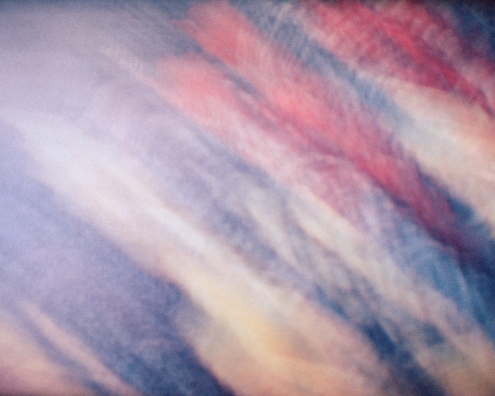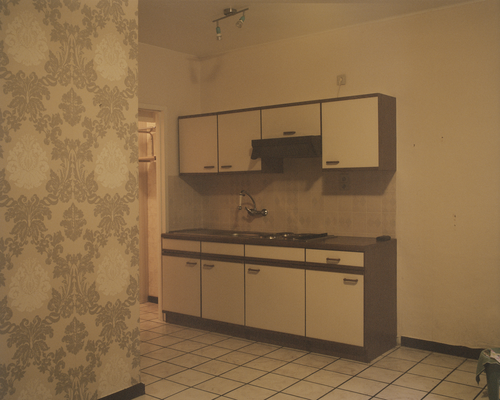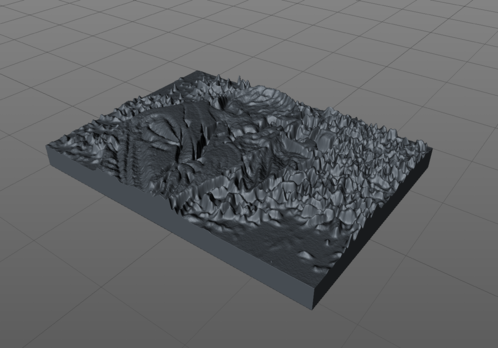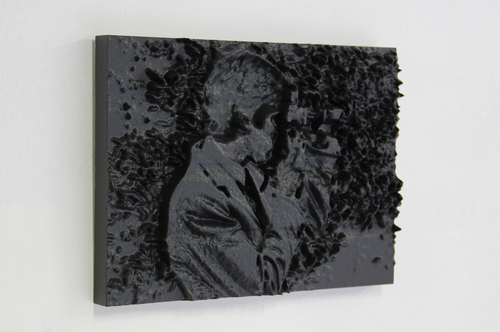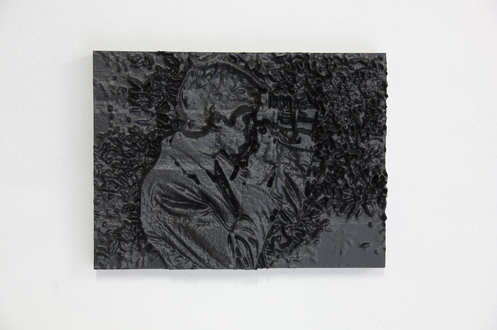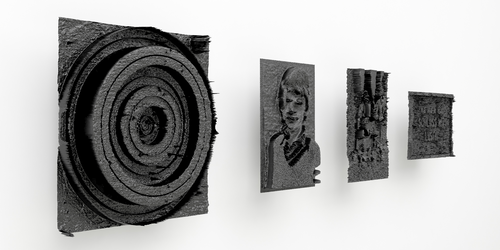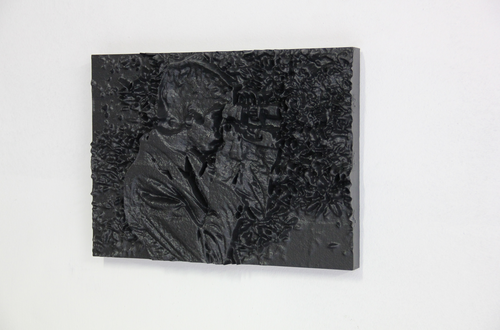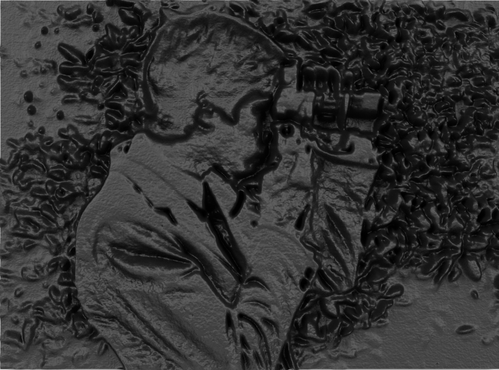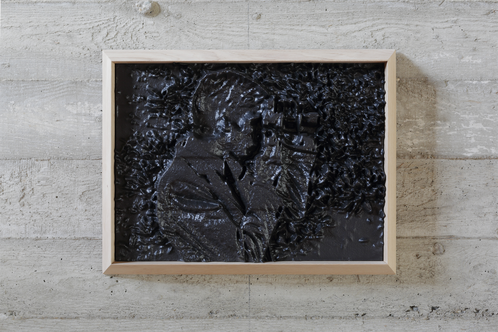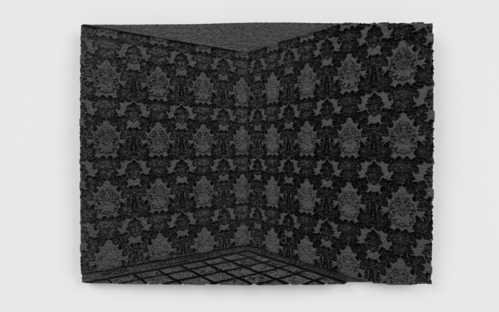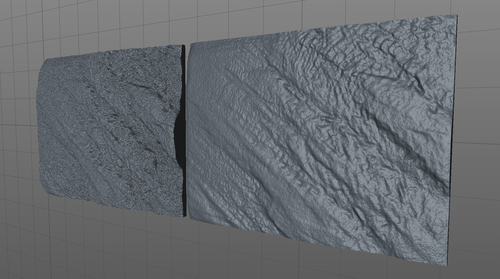Additive Photography
My original aim in copying and perfecting the experiments of Willème and Marey was to distance myself from the emotional content in my photographs, turning them instead into abstract objects. The content of the photographs was to remain exclusive information. This procedure was deliberately intended to avoid sentimentalism, instead drawing the work into the realm of theoretical and historical discourse and the technical aspects of its creation.
My personal reflection on the relationship between photography and sculpture sets out from Nicéphore Niépce’s Le Point de vue du Gras (1826), considered the world’s first example of photography. What fascinates me about this proto-photograph is its material thickness: besides the physicality of its support, a pewter plate coated with bitumen of Judea, the exposure process consisted of slowly inscribing the image into the bitumen tar, which gave it a physical depth, however infinitesimal. It is the most eloquent manifestation of the fact that analogue photography was first a three-dimensional imprint: light carving traces into a physical substance.1 The first photograph in history appeared as a black, sculptural object, exactly the sort of abstraction I was looking for.
With the invention of contemporary 3D scanners and printers, it has become possible to realise Willème’s ambitions. You can now scan a sculpture or a person and print it at any size desired, with a minimal margin of inaccuracy between scanning and printing. Today, through 3D software programs, it is also possible to translate an existing photograph into a sculpture, omitting the scanning part altogether.
In 2014, I started working in Cinema 4D, a 3D-software program that allows the user to import a digital photograph and translate the image’s contrasts into spatial depth. The lighter areas of the photograph are read by the program as having a different level in depth as the darker areas, much like in Niépce’s tar coating. This assigned depth lends the image an abstract quality, which I found very interesting. The program accurately translated contrast into depth in a way that differed from Willème and Marey’s experiments. The software did not consider the actual proportions of the figure — as it would have when scanned — but only considered the difference between light tonalities. In other words, it produced an inaccurate figure. Its algorithm turned parts of the photograph outward or inward according to light contrasts, transforming perceived reality into a physical impossibility.
For example, my work Photographer originates from an image with strong light contrasts. [fig. 18] In its conversion from two to three dimensions, the protagonist photographer’s dark hair is pressed into the surface, while his jacket surfaces in the foreground. His black camera becomes unrecognisable due to the strong reflections of light on its surface. The leaves in the background, meanwhile, do not follow their natural shape, but peak where the light bounces back. [fig. 19] [fig. 20] The unusual results of the final, three-dimensional shape occur because the image’s translation into depth is made by its light contrast instead of its volume. Here, the software interprets entirely differently to the artist’s eye, leading to an inaccurate interpretation of reality. As an artistic experiment, the software delivered an interesting free-form map that could then be turned into an object. Progressing from this design, I had the file printed in plastic on a size of 28 x 37 x 6 cm. [fig. 21] I had the 3D print moulded and cast into bronze in order to emphasise its sculptural nature, after which it was framed in a specially designed oak frame. [fig. 22]
The image used for Photographer comes from a Super 8 film my father once recorded. It shows a family member taking photographs, which has symbolic resonance for the work. What interested me most about this image was the profile of the person and his camera. When considering images to convert with my photography-into-sculpture process, this image seemed, to me, like the relief of a frieze. My interest in this sculptural application of photography led me to record new, malleable images that could be appropriated to create objects: images of landscape and memory that could be semantically altered by changing their physical framework and context. This would also shift their emotional meaning into a grid of historical concepts and abstraction. I started applying this procedure to different photographs in order to see different effects. At first, I chose the most emotional images from my series, so as to bury their emotional content in abstraction. In addition, I selected images based on their possibility of becoming an interesting frieze. For example, figure 23, the picture of an apartment, is a deeply emotional image, and converting it into abstraction served its purpose. [fig. 23] But beyond this, the wallpaper in that room proved to be a very interesting object to convert into three dimensions. [fig. 24]
I also tried a different process of abstraction: I projected the Super 8 films made by my father on a screen and simultaneously recorded analogue photographs of these projections. The discrepancy between the still of the photograph and the motion of the film made colourful abstractions of our family album. Nude Beach Bound shows a half-naked woman walking on a French nudist beach, caught on film and angered by my father’s intrusion. I recorded her progression in nine steps, experimenting with the different speed of the projection and the recording time of the photograph. These captured images of motion, relating to Marey’s chronophotographs, turned into abstract hues and their 3D printed counterparts into abstract, rocky formations. [fig. 25] Still, I found them not abstract enough — they were still revealing too much. [fig. 26] I wanted to go beyond rendering flat surfaces into bas-reliefs.
1 Menegoi, Simone, ‘The Camera’s Blind Spot: On the Materiality of Photography’ (2016).
